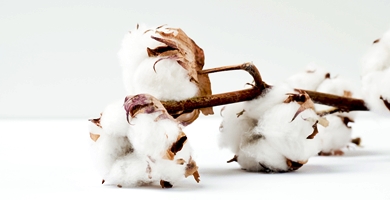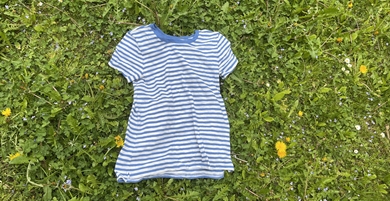Kleider-Recycling
«Konsumenten sollten kritische Fragen stellen»
Die Schweiz und die EU forcieren die Wiederverwendung von Rohstoffen. Doch die Kreislaufwirtschaft in der Textilbranche treibt trotz bester Bemühungen zuweilen abstruse Blüten. Denn auch Recycling kann der Umwelt schaden. Empa-Forscherin Claudia Som räumt im Interview mit Nachhaltigkeits-Mythen auf und sagt, wie Konsumentinnen und Konsumenten schwarze Schafe erkennen.

Frau Som, mit Ihren KollegInnen an der Empa haben Sie die Umweltbilanz einer Outdoorjacke aus Recycling-Material untersucht. Heraus kam dabei unter anderem, dass die Verwendung von Polyester aus PET-Flaschen keinen grossen Vorteil bringt – für Laien vielleicht überraschend. Hätten Sie das erwartet?
Schon vor unserer Studie hatten wir von Experten aus der Verpackungsindustrie vernommen, dass das «Flaschen-PET» aus Qualitätsgründen besser im Flaschen-Kreislauf bleiben sollte. Es gab sogar Gerüchte, dass findige Unternehmer im Ausland PET-Flaschen gar nicht für Getränke herstellen, sondern um von der hohen Nachfrage nach «Recycling-PET» zu profitieren. Daher muss man genau hinschauen, woher das PET kommt und welche Qualitätsanforderung es für die Recycling-«Loops» erfüllen muss – vor allem, wenn viele Durchgänge erzielt werden sollen.
Recycling und Kreislaufwirtschaft im Textilbereich ist längst auch in der Politik ein Thema. Sie haben kürzlich eine Umfrage unter Schweizer Textilfirmen gemacht, um das Potenzial zu erkunden. Was waren Ihre Erkenntnisse?
Die Idee, die Produktionsabfälle in der Textilindustrie genauer anzuschauen, kam uns bei einem Firmenbesuch. Obwohl die Firma versucht hat, Abfälle zu reduzieren und eine sinnvolle Weiternutzung zu finden, landete ein grosser Teil von hochwertigen Materialien in der Kehrrichtverbrennung. Oft bleiben Unternehmen auch im Ungewissen, was Abnehmer mit dem Material tun. Interessant für uns war, dass auch Designer beitragen können, Produktionsabfälle zu vermeiden – zum Beispiel, indem sie Farbabweichungen tolerieren.
Der grösste Teil der Kleidung landet heute am Ende der Lebensdauer in der Verbrennung oder auf einer Deponie – ungenutzt. Wie hoch schätzen Sie das Potenzial für Recycling ein?
Aus unseren Kontakten zur Schweizer und europäischen Industrie haben wir gelernt, dass erfolgreiches Recycling davon abhängt, wie gut man Zusammensetzung und Qualität des Materials kennt. Ausserdem braucht es genügend grosse Mengen, damit die Prozesse wirtschaftlich werden. Unsere Kleidung aus zum Teil wilden Materialmischungen und die «Fast fashion» mit tiefer Materialqualität machen erfolgreiches Recycling schwieriger. Deshalb hoffen wir, dass unsere Forschung zu Schweizer Produktionsabfällen einen Beitrag leistet, schneller eine nachhaltige Kreislaufwirtschaft aufzubauen. Denn in der Schweizer wie auch in der europäischen Produktion ist die Qualität des Materials relativ hoch, die Zusammensetzung weitgehend bekannt, und es fallen relativ grosse Mengen desselben Materials an.
| Audio |
Beitrag im Ratgeber auf SRF1 vom 24. März 2022









